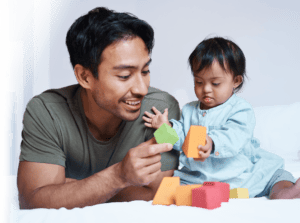Three years ago, I was pregnant with our youngest of three. We lived in a small house with many diagnoses under one roof‑including autism, ADHD, a connective tissue disorder, hypotonia, anxiety, Crohn’s, Celiac’s, and severe food allergies. Many of the diagnoses were new and we had upwards of sixteen therapies and appointments per week to care for all of our family members’ needs.
Around that same time, there was a campaign on social media that expressed the importance of reducing routine and increasing boredom – yes, you read that right – over the summer to strengthen childhood development.I remember seeing articles that scolded mothers for not letting their children be bored, and I remember feeling inadequate when reading them. Two of my closest friends, who are also special needs moms, felt the same. We asked one another questions that summer such as: “What about children who need a routine, like ours with autism? Or children who feel lost in a sea of boredom, rather than motivated to create? What about families who drive to and from appointments and therapies every day, and the thought of their children running around panicked and bored at the end of each day causes their blood pressure to rise?”Today, I want to share with you what I’ve learned in summers and life since in a way that I hope will uplift and encourage you!
What Do We Mean by “Boredom?”
It took me a little while to figure out, but once I did a lightbulb clicked on in my brain and I went from feeling like I was not enough to feeling empowered to help my children grow. The term “boredom” in this sense means opportunity for creative play. Boredom can actually give a child some creative power through unstructured play.Creative play happens when a child pretends, or uses their imagination with little intervention, and engages in play or interaction with others. It is an organic process that stems from a child’s internal interests and desires.I like what Prof. Peter Gray of Boston College has to say about play in this post at Voice of Play:Play is not necessarily defined in terms of a single quality, but instead incorporates a collection of characteristics of varying degree. Play is:
-
Self-chosen and self-directed.
-
Guided by mental rules, but the rules leave room for creativity.
-
Imaginative and conducted in an alert, active, but relatively non-stressed frame of mind.
Creative play is important because it provides children with a foundation for conflict resolution. It allows children to develop ideas and to present those ideas to their peers. Finally, it gives the child a sense of self: their interests can be both unique and a springboard for social growth.
If Your Child Struggles with Creative Play, Try This:
-
Structure time together. For our family, we structure each morning with stories, tidying, learning time, tending the garden, and going to appointments.
-
If you can, schedule therapies and appointments consistently during a period of the day – mornings or afternoons. While this may not always be possible, it does help to incorporate it into the routine when you can.
-
Plan a period of time each day (whether it’s 5 minutes or 5 hours, whatever works best for your children and your family in this season of life!) dedicated to creative play.
-
Tools that help with this are toys or objects that spark creative play. My personal favorites are dress up clothes (no need to buy them! Children love using things from around the house!), magnetic blocks like these, large wooden blocks like these, and puppets.
-
If open-ended play still feels overwhelming, explore play therapy or DIR/Floortime for you and your child. These are wonderful tools for integrating play step-by-step in the home environment with the help of a certified professional. Two of our children had Floortime therapy and it was wonderful for our family!
-
Last, but never least, give yourself a pat on the back. Creative play looks different for each child, but every child’s unique thoughts, personality, and abilities make them creative in this world! So take baby steps toward “boredom balance” and don’t let any negative articles break your stride!


